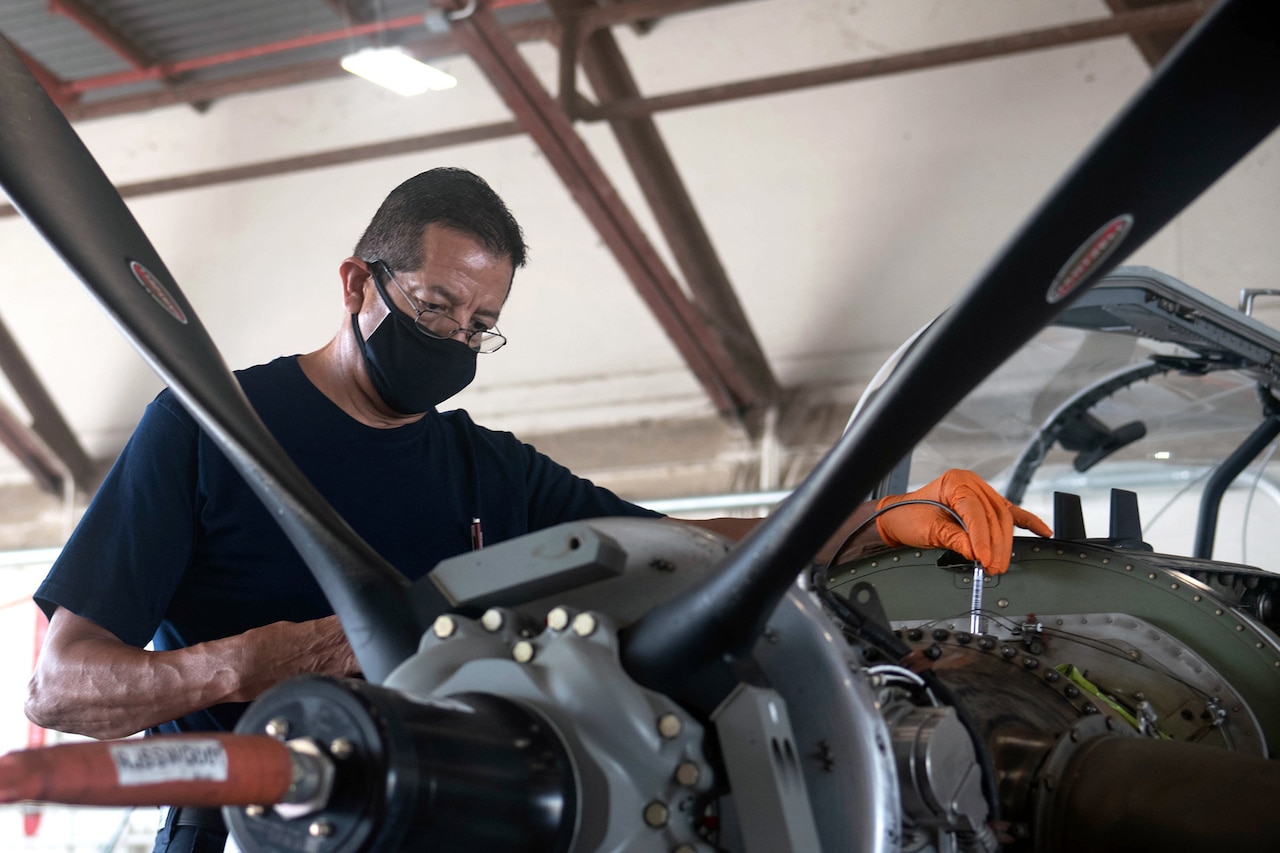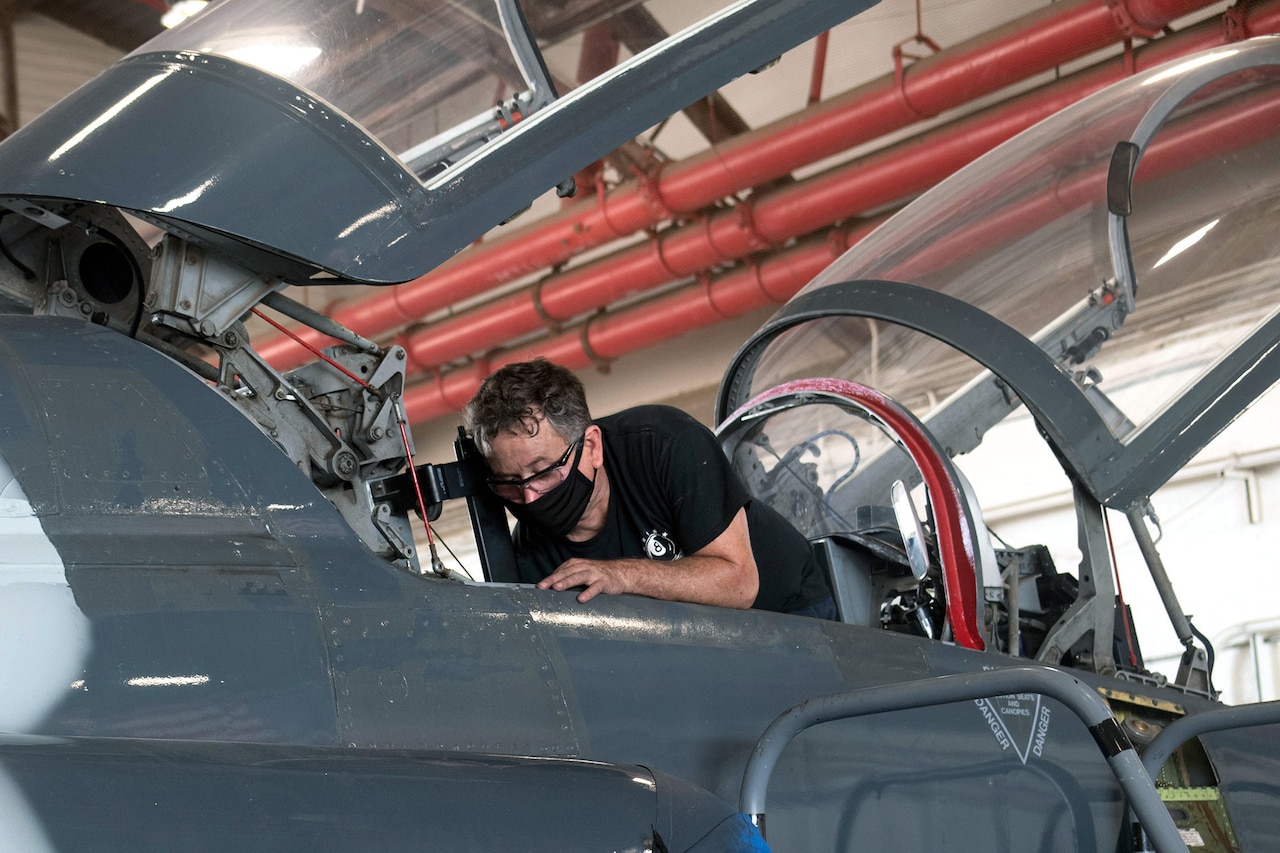Aug. 14, 2020 | , 502nd Air Base Wing
More than four months ago, Robert West, director of the 12th Maintenance Group at Joint Base San Antonio-Randolph, Texas, learned through a social media video sent to him from his uncle in Australia that the Czech Republic was encouraging its citizens to wear masks in an effort to slow the spread of the novel coronavirus, which was quickly gaining momentum.
At about the same time, as the United States was feeling the effects of the coronavirus pandemic and JBSA was transitioning into Health Protection Condition C, the 12th Maintenance Group, like other base organizations, followed the advice of the Centers for Disease Control and Prevention, sending its most at-risk workers home — including those at its 812th Aircraft Maintenance Squadron at Naval Air Station Pensacola, Florida — to prevent contraction of COVID-19, the disease caused by the coronavirus.
"I sent folks home on hazardous and safety leave because of their age and underlying medical conditions," West said. "I could have kept everybody here under mission-essential status, but we went the extra step to make sure there were folks who were protected because we still had so much that was unknown about the virus. And at that time, there was such a run on all the supply chain that it was very difficult to get hand sanitizer."
But West said he circled back to the video that his uncle had sent him and went online to find a suitable mask for the workers whose mission-essential duties kept them on base, especially the mechanics and other maintainers who support the 12th Flying Training Wing's pilot training mission.

"We knew that we couldn't get the N95 mask because those needed to be kept for those in the medical professions, so we went after a black cloth mask that was washable, and we immediately got 1,000 of them," he said. "We got them before the Department of Defense had made it mandatory. At that point, it was almost impossible to get masks, so we beat everybody to the punch."
The mask was a critical tool for the maintenance group, West said.
"You can social distance when you're at least 6 feet apart, but when the maintainers are working, they are side by side in a tug or they're up inside of an aircraft," he said. "They're working in teams, so there's no way you can be 6 feet apart."
The maintenance group initiated a number of other mitigation efforts as well, West said.
"We separated everybody if they were capable of doing it," he said. "If we had a one-shift operation, it became a two-shift operation. If they were a two-shift operation, they went to a three-shift. We also spread them out into another building so we could further distance our folks."
Stay-at-home measures primarily affected office personnel, though it also affected those who had underlying medical conditions and those who were at least 65 years old.
"There were members who were on situational teleworking to keep them away from the office, but they could come in if they needed to take care of files they couldn't access at home," West said.
The same challenges faced the 812th Aircraft Maintenance Squadron at Naval Air Station Pensacola, which supports two flying squadrons of the 12th Flying Training Wing's 479th Flying Training Group.
"Like many agencies across the Air Force, we implemented COVID-19 mitigation strategies to support our most vulnerable employees," said Brant Bushnell, 812th AMXS director. "This included employees on some form of teleworking and safety leave. Our lean civil service unit of 125 employees is approximately 30 percent smaller than a comparable active-duty unit, so any reduction in available manpower creates significant challenges to our ability to continue supporting the mission."
The squadron partnered with the 479th Flying Training Group to develop a sustainable strategy that enabled the mission to continue at a reduced rate while supporting COVID-19 mitigation strategies in both operations and maintenance, Bushnell said.
"Our biggest challenges were the ability to inspect the aircraft each evening in time for the next day's flying and maintaining our scheduled phase inspection requirements," he said. "To address these challenges, we first looked internally to support our daily shortfalls. [People] were shifted around to different work centers daily to fill the most critical holes each day, not a normal occurrence."
The squadron also partnered with the 479th Student Squadron to secure the services of eight combat systems officer second lieutenants in casual status awaiting training, Bushnell said.
"They were trained to marshal aircraft in and out of the parking spots, freeing up mechanics to begin inspecting aircraft sooner for the next sortie," he said. "This has been very successful and critical to our ability to support the continuation of the [combat systems officer] training mission."

In addition, the squadron is leaning on the 12th AMXS at JBSA-Randolph to accomplish a phase inspection on its T-6A fleet.
"That inspection is currently in progress and will enable us to maintain our phase flow, which is extremely important to having aircraft available for training," Bushnell said.
The squadron also mirrored its counterpart at JBSA-Randolph by using the CDC-recommended cleaning methods, wearing masks and social distancing.
"We have used all available tools at our disposal, including restricted movement and quarantine," West said. "We wanted to make sure that they were all healthy," he said. "When those folks returned to work, they had to go through the public health protocols for JBSA. Either they had to have two negative tests to return or they had to have three days of symptom-free issues after the 14 days of quarantine."
After a series of HPCON changes and a return to the current HPCON C, more 12th MXG employees — except those who are 65 and older or have underlying medical conditions — are back at work. But the maintenance group remains focused on the 12th FTW mission while adhering to CDC guidelines.
One of the maintenance group's biggest challenges has been achieving a balance between supporting the mission and protecting its most vulnerable employees, West said. "My senior management team has been very good at articulating policy and keeping a good communications flow," he added. "If anybody felt uncomfortable, even if they didn't have underlying conditions, they could take leave."
The maintenance group benefited greatly from teleconferencing to keep the lines of communication open, West noted. "We were also the very first organization to have a virtual unit effectiveness inspection, which we did very well on," he said.
West said his team has risen to the challenges it is facing during the pandemic.
"They're rocking along," he said. "We've had some of the best stats we've ever had in terms of aircraft availability and fixing aircraft."






No comments:
Post a Comment